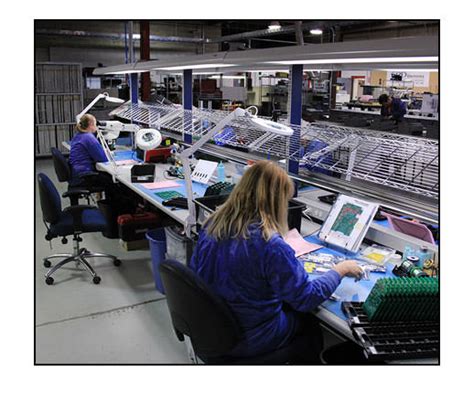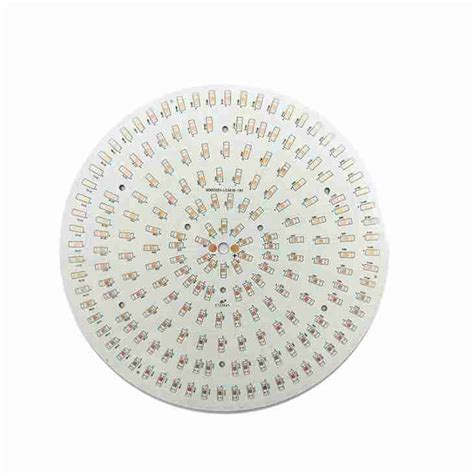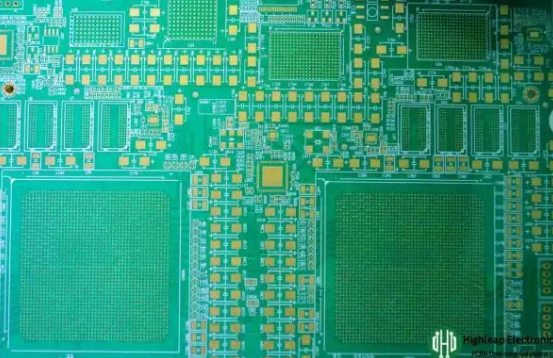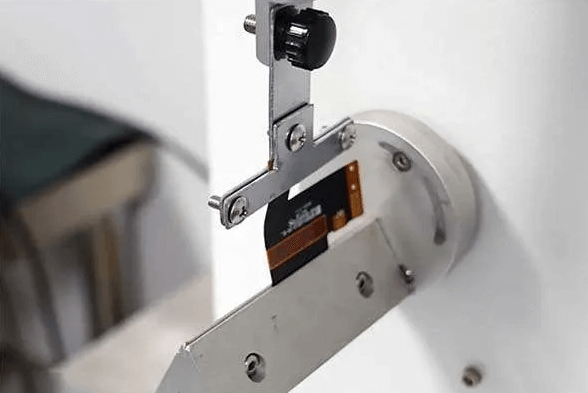Unlocking Potential: The Future of Contract Manufacturing in Electronics
Key Takeaways
In the evolving landscape of contract manufacturing, particularly in electronic assembly, several key insights can be drawn. The increasing popularity of pcb assembly services illustrates a shift towards more specialized, high-quality production processes. As companies focus on core competencies, outsourcing to professionals in pcba (printed circuit board assembly) enables them to maintain flexibility and scalability. Additionally, embracing new technologies such as automation and IoT (Internet of Things) significantly enhances efficiency and reduces time-to-market for new electronic products. Companies that invest in strategic partnerships with expert manufacturers are well-positioned to thrive amid competition. Moreover, understanding market dynamics and consumer demands are crucial in tailoring assembly solutions that not only meet but exceed client expectations. By leveraging innovation and staying ahead of trends, businesses will unlock substantial growth potential in the ever-evolving world of electronics manufacturing.
Introduction to Contract Manufacturing in Electronics
Contract manufacturing in electronics, particularly pcb assembly and pcba, serves as a cornerstone for companies seeking to enhance efficiency, reduce costs, and drive innovation. This model allows businesses to leverage specialized expertise and advanced facilities offered by contract manufacturers, freeing them to focus on core competencies such as product design and marketing. By collaborating with responsive partners that excel in mass production techniques, firms can significantly shorten time-to-market for their products.
Emerging trends in this space include the increasing use of automation and robotics in electronic assembly, which not only boosts precision but also mitigates human errors that can occur throughout the manufacturing process. In addition, the demand for customized solutions tailored to specific client needs underscores the importance of flexibility within contract manufacturing arrangements.
A key takeaway here is the significance of investing in infrastructure and technology; it is through these advancements that companies can unlock greater potential within their supply chains. As we navigate this landscape, incorporating strategies such as adopting Internet of Things (IoT) technologies will facilitate real-time tracking of production processes and promote transparency.
“The future of electronics manufacturing lies not just in moving faster but also in moving smarter.”
By focusing on continuous improvement and remaining agile amid market fluctuations, businesses that effectively harness the power of contract manufacturing can position themselves well for success within an evolving industry landscape.
Emerging Trends in Electronic Assembly
As the electronics industry continues to evolve, several emerging trends are reshaping the landscape of contract manufacturing electronic assembly. Key among these is the increasing demand for flexibility and customization, which has prompted manufacturers to adopt more agile production techniques. The rise of Internet of Things (IoT) devices has also spurred new requirements for pcb assembly, as companies seek to integrate complex functionalities into smaller form factors. Alongside this, there is a growing emphasis on sustainability and environmentally friendly practices, leading to innovative approaches in materials and processes used in the production of pcba. Advanced automation technologies, such as robotics and machine learning, are being leveraged to enhance efficiency, accuracy, and quality control within the assembly process. Furthermore, with more emphasis on global supply chain resilience, companies are increasingly looking for local sourcing options that not only reduce lead times but also mitigate risks associated with long-distance shipping. As these trends continue to unfold, stakeholders will need to adapt strategically, ensuring that they are well-positioned to harness the full potential of contract manufacturing in this dynamic environment.
Technological Advancements Shaping the Future
The world of contract manufacturing in electronics is undergoing a significant transformation, primarily driven by technological advancements. At the forefront of this evolution is the rise of automated systems that optimize production processes and enhance precision. Automation not only improves efficiency but also reduces human error, which is critical in tasks such as pcb assembly, where accuracy is paramount. Furthermore, advancements in materials science have led to the development of lighter and more durable components, allowing for more innovative designs in electronic products. The implementation of Industry 4.0 concepts—such as the Internet of Things (IoT) and smart factories—positions contract manufacturers to harness real-time data, facilitating improved decision-making and operational agility. As manufacturers increasingly adopt these technologies, they can streamline their supply chains for better scalability and flexibility. In particular, the integration of pcba (printed circuit board assembly) techniques allows for sophisticated electronics to be produced at lower costs while maintaining high standards of quality. With these innovations, companies can significantly unlock their growth potential and meet the ever-evolving demands of the market, solidifying their competitive edge in this dynamic industry landscape.
Strategies for Unlocking Growth Potential
To effectively unlock growth potential in the realm of contract manufacturing for electronics, companies must adopt a multifaceted approach that leverages both market insights and technological advancements. A crucial strategy lies in optimizing pcb assembly processes, which can significantly enhance production efficiency and reduce lead times. Embracing the latest developments in automation and robotics not only streamlines pcba operations but also minimizes human error, thus ensuring consistent quality across the board. Moreover, establishing strong collaborations with suppliers can enhance material sourcing and bolster supply chain resilience. This adaptability is essential in a market characterized by rapid change. Investment in employee training is also vital; knowledgeable workers are better equipped to manage sophisticated technologies and respond to emerging challenges in electronic assembly. By implementing these strategies, manufacturers can position themselves not just to compete but to thrive in an increasingly dynamic electronics landscape, fostering an environment where innovation is not just encouraged but becomes a fundamental aspect of their operational ethos.
The Role of Innovation in Contract Manufacturing
Innovation is a critical driving force in the realm of contract manufacturing, particularly within the electronic assembly sector. As companies seek to enhance their competitiveness and adaptability, the integration of cutting-edge technologies fosters an environment ripe for advancement. For instance, companies are increasingly adopting automated processes in pcb assembly to streamline production and reduce errors. This automation not only enhances efficiency but also ensures a higher quality of production output, particularly relevant in pcba where precision is paramount. Moreover, innovative design methodologies enable manufacturers to develop more complex and sophisticated products without compromising on cost-effectiveness or time-to-market. Embracing digital transformation through tools like artificial intelligence and machine learning empowers contract manufacturers to anticipate market trends, optimize supply chains, and customize products based on real-time data analysis. As a result, fostering an innovation culture within contract manufacturing is not merely beneficial—it is essential for unlocking potential growth avenues and driving continuous improvement across the electronics manufacturing landscape. The ability to adapt quickly through innovation positions businesses to meet evolving consumer demands while pushing industry boundaries further than ever before.
Case Studies: Success Stories in Electronic Assembly
The rise of contract manufacturing in the electronics sector has given birth to numerous success stories, showcasing the profound impact of pcb assembly and pcba techniques. Companies that have embraced these methodologies have not only streamlined production processes but also enhanced their product quality. For instance, a well-known tech firm collaborated with a contract manufacturer specializing in electronic assembly, leading to a drastic reduction in time-to-market for its flagship product. This partnership leveraged state-of-the-art pcb assembly technology, allowing for faster iterations and more efficient production runs. Additionally, another electronics brand implemented an innovative pcba process that utilized automated inspection systems, resulting in a significant decrease in defects and increased customer satisfaction. These case studies illustrate how embracing advanced electronic assembly practices can unlock potential for growth and reinforce competitive advantage in a fast-paced industry. By learning from these success stories, others in the sector can adopt similar strategies to navigate the complexities of today’s manufacturing landscape effectively.
Challenges and Solutions in the Industry
In the landscape of contract manufacturing for electronics, particularly in pcb assembly and pcba, several challenges arise that companies must confront to maintain efficiency and quality. One significant challenge is the increasing complexity of electronic products. As devices evolve to be more compact yet technologically advanced, the precision required in manufacturing processes intensifies. This complexity can lead to higher costs and longer lead times if not managed effectively. To tackle this issue, manufacturers are investing in advanced automation technologies, which enhance precision while reducing human error. Additionally, supply chain disruptions have become prevalent, further complicating the manufacturing process. In response to this challenge, businesses are diversifying their supplier networks and adopting more resilient sourcing strategies to mitigate risks associated with single-source dependence. Moreover, evolving regulations and compliance standards necessitate continuous adaptation in practices for pcb assembly, making it vital for manufacturers to stay informed and agile. Collaborative partnerships within the industry can offer not just shared knowledge but also innovative solutions to address these regulatory hurdles effectively. By proactively identifying these challenges and implementing robust solutions, companies can unlock their potential for growth in electronic assembly while navigating an increasingly competitive environment.
Conclusion: The Path Forward for Electronics Manufacturing
As the landscape of electronics manufacturing continues to evolve, contract manufacturing and electronic assembly, particularly in the realm of PCB assembly or PCBA, will play a pivotal role in shaping the industry’s growth trajectory. The rise of outsourcing has led companies to rely more on specialized firms capable of delivering state-of-the-art solutions. This shift not only enhances operational efficiency but also allows manufacturers to focus on core competencies while leveraging the expertise of contract manufacturers. The integration of cutting-edge technologies, such as automation and IoT, is streamlining processes and facilitating more robust quality control mechanisms that are vital for success in electronic assembly. Furthermore, collaboration with innovative partners is essential to navigate challenges that arise in sourcing components and managing supply chain complexities. By fostering a culture of innovation and adaptability, the industry can unlock new avenues for growth and ensure a competitive edge in an increasingly demanding market environment. Ultimately, embracing these strategic principles will be crucial for manufacturers aiming to harness the vast potential within the world of contract manufacturing in electronics.
Conclusion: The Path Forward for Electronics Manufacturing
The landscape of contract manufacturing in electronics, particularly in pcb assembly and pcba, is evolving rapidly, driven by a blend of innovation and market demand. As the industry adapts to emerging trends, businesses that leverage contract manufacturing will not only enhance their operational efficiencies but also position themselves strategically for future growth. The integration of advanced technologies such as automation and artificial intelligence plays a pivotal role in streamlining processes within electronic assembly. Companies focusing on these technological advancements can unlock significant potential, allowing them to offer high-quality products while reducing production costs. Furthermore, embracing collaboration and supply chain optimization strategies will empower manufacturers to react swiftly to market changes, ensuring resilience and sustainability in their operations. As we look ahead, it is essential for stakeholders within the electronics sector to remain flexible and open to innovation, thus paving the way for a more dynamic and responsive manufacturing environment that promises not only efficiency but also excellence in product delivery.
FAQs
What is contract manufacturing in electronics?
Contract manufacturing in electronics refers to outsourcing the production of electronic components and assemblies to specialized manufacturers. This allows companies to streamline their operations, reduce costs, and leverage advanced technologies in pcb assembly and pcba.
What are the benefits of using contract manufacturers?
Using contract manufacturers offers several advantages, including access to high-quality production processes, reduced manufacturing costs, and faster time-to-market. Companies can focus on their core competencies while leaving the complexities of pcb assembly and pcba to experts.
How does technology influence contract manufacturing?
Technology plays a significant role by introducing automation, advanced robotics, and smart manufacturing principles. These innovations enhance efficiency and accuracy in pcb assembly, leading to improved quality and reduced waste.
What emerging trends should companies be aware of?
Companies should monitor trends such as the increasing demand for customization, the integration of Internet of Things (IoT) devices in production lines, and the shift towards more sustainable practices in electronics manufacturing. These factors are pivotal for growth in pcba services.
What challenges do contract manufacturers face?
Challenges include supply chain disruptions, fluctuating demand, and adapting to rapid technological changes. Navigating these obstacles requires strategic planning and flexibility.







